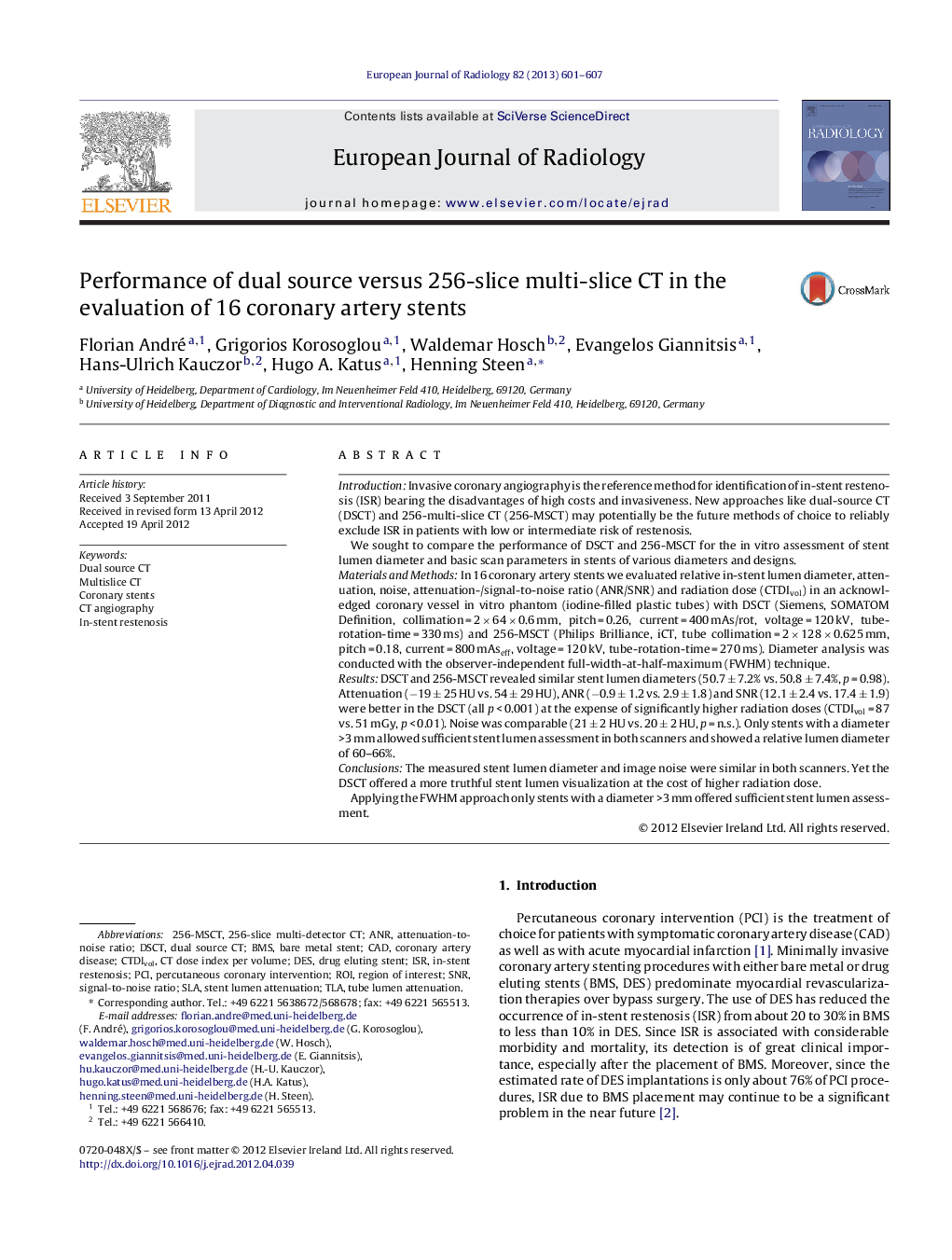| کد مقاله | کد نشریه | سال انتشار | مقاله انگلیسی | نسخه تمام متن |
|---|---|---|---|---|
| 4225910 | 1609779 | 2013 | 7 صفحه PDF | دانلود رایگان |

IntroductionInvasive coronary angiography is the reference method for identification of in-stent restenosis (ISR) bearing the disadvantages of high costs and invasiveness. New approaches like dual-source CT (DSCT) and 256-multi-slice CT (256-MSCT) may potentially be the future methods of choice to reliably exclude ISR in patients with low or intermediate risk of restenosis.We sought to compare the performance of DSCT and 256-MSCT for the in vitro assessment of stent lumen diameter and basic scan parameters in stents of various diameters and designs.Materials and MethodsIn 16 coronary artery stents we evaluated relative in-stent lumen diameter, attenuation, noise, attenuation-/signal-to-noise ratio (ANR/SNR) and radiation dose (CTDIvol) in an acknowledged coronary vessel in vitro phantom (iodine-filled plastic tubes) with DSCT (Siemens, SOMATOM Definition, collimation = 2 × 64 × 0.6 mm, pitch = 0.26, current = 400 mAs/rot, voltage = 120 kV, tube-rotation-time = 330 ms) and 256-MSCT (Philips Brilliance, iCT, tube collimation = 2 × 128 × 0.625 mm, pitch = 0.18, current = 800 mAseff, voltage = 120 kV, tube-rotation-time = 270 ms). Diameter analysis was conducted with the observer-independent full-width-at-half-maximum (FWHM) technique.ResultsDSCT and 256-MSCT revealed similar stent lumen diameters (50.7 ± 7.2% vs. 50.8 ± 7.4%, p = 0.98). Attenuation (−19 ± 25 HU vs. 54 ± 29 HU), ANR (−0.9 ± 1.2 vs. 2.9 ± 1.8) and SNR (12.1 ± 2.4 vs. 17.4 ± 1.9) were better in the DSCT (all p < 0.001) at the expense of significantly higher radiation doses (CTDIvol = 87 vs. 51 mGy, p < 0.01). Noise was comparable (21 ± 2 HU vs. 20 ± 2 HU, p = n.s.). Only stents with a diameter >3 mm allowed sufficient stent lumen assessment in both scanners and showed a relative lumen diameter of 60–66%.ConclusionsThe measured stent lumen diameter and image noise were similar in both scanners. Yet the DSCT offered a more truthful stent lumen visualization at the cost of higher radiation dose.Applying the FWHM approach only stents with a diameter >3 mm offered sufficient stent lumen assessment.
Journal: European Journal of Radiology - Volume 82, Issue 4, April 2013, Pages 601–607